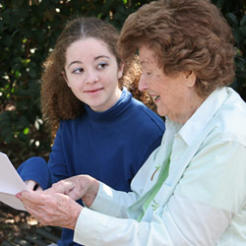When a charity boards begins to diversify, communication can become harder. Tesse Akpeki explores.
‘The single biggest problem in communication is the illusion that is has taken place.’ This George Bernard Shaw quote has stuck with me all my life and translates across what I often see on trustee boards. Flash back to the meeting that people assess as having gone well. Everyone thinks everyone else understands what they mean and that ambitious policy gets implemented. The next annual board assessment indicates that no-one understood the implications of adopting the new policy and even worse –the board conflict began when the policy was implemented.
Recruitment is another hotspot. Charity boards can go tribal and as a result can unconsciously attract the same type of person, with similar backgrounds and perspectives. Group-think or assumed wisdom discourages robust or independent challenge resulting in cosiness, ineffective governance and conflicts of interest. Imagine what is possible with a diverse board made of people from six different generations!
I reflected on this recently with a number of charities as they explored how diverse generations can effectively govern together. Different perspectives bring its own challenges. For example, while the recent austerity is familiar to my peers and I , who went though a similar difficult time in the 80s and early 90s, my 18-year-old niece finds the experience unfamiliar and scary.
For her, the downturn is uncharted territory and the uncertainty has created high levels of anxiety. As trustees we will bring different lens to the same issue, and this enriches the overall outlook in problem solving. Gen Yers tend to be direct and act if they know what the specific request is, traditionalists are loyal and have a sense of duty, Gen Xers are the first generation to comfortably embrace technology.
The range of communication channels available are wildly different across the age groups. I prefer face-to-face encounters, working with the phone and receiving old fashioned post cards and letters. My younger colleagues use email, smart phones, Whats App, Instagram, other forms of social media. My young nephews and nieces are ‘Android’- completely lost without their phone apps.
It is no exaggeration to say that young people are perhaps the most connected generation that has ever been. They can contact people in different countries within seconds and have access to the largest store of information (the internet) at their fingertips. They can get news personalized to their interests 24/7/365.
At the same time, they are a generation that struggle to disconnect from the endless streams of information. Relationships, sleep patterns and positions in society are all struggling under this strain. The challenge? How can board communication engage with this diversity in a way that every board member feels able to participate and utilise his or her skills?
People who attended the session relayed the frustration of talking to a colleague then someone sends an email or text in response – mismatched communications.
What’s the answer? Unfortunately there is no magic bullet. Understanding why people use different types of communication is a good start. A young person at the event said they used email for ‘arse-covering’ creating a paper trail and ensuring accountability.
Transparency was given as the presenting reason, but underlying this the lack of trust was driving copious electronic threads. Perhaps if they trusted their colleagues more just a person to person conversation would suffice on occasion? I suggested that she start a dialogue by explaining why she often used email and agree how reassurance can result in greater confidence. Could you agree the preferred methods of communication with your colleagues?
The exchange with six generations participating, reflected a commonality of vision, impact of purpose and the focus that results in a shared sense of community when everyone truly connects.









